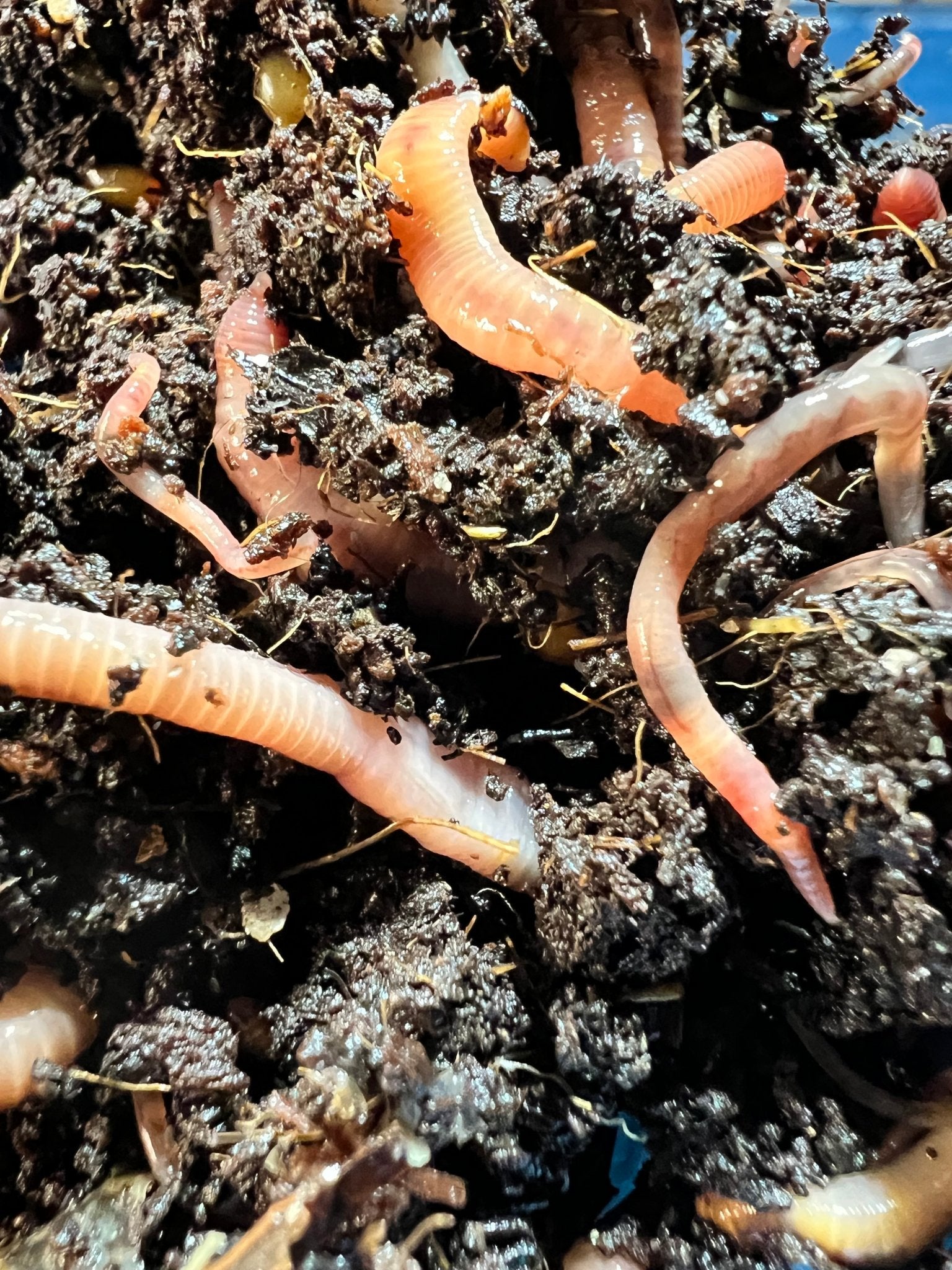Red Wiggler Worms - Perfect for Vermicomposting and Soil Enrichment
Red Wiggler Worms - Perfect for Vermicomposting and Soil Enrichment
Blog Article
Maximizing the Perks of Red Wiggler Worms: A Comprehensive Handbook for Home Gardeners and Urban Farmers
In the world of sustainable horticulture practices, red wiggler worms stand as unrecognized heroes, silently changing natural waste right into nutrient-rich castings that can work wonders for soil wellness. By discovering the complexities of exactly how to properly care for and make the most of the benefits of red wiggler worms, people can unlock a wealth of opportunities for boosting the sustainability and performance of their gardening endeavors.
Understanding Red Wiggler Worms
Red Wiggler worms, renowned for their efficient composting abilities, are a varieties of earthworms extensively used in vermiculture techniques. These worms, scientifically understood as Eisenia fetida, flourish in decaying organic material, making them optimal candidates for composting (Red Wiggler Worms). Red Wigglers are voracious eaters, qualified of eating their own weight in natural waste daily. Their gastrointestinal procedure breaks down raw material into nutrient-rich castings, which are a valuable resource for enhancing dirt and advertising plant development.
One key feature of Red Wiggler worms is their reproductive rate. These hermaphroditic animals possess both female and male reproductive organs, enabling them to replicate quickly under beneficial conditions. A fully grown Red Wiggler can produce numerous spawn in a brief period, guaranteeing a consistent population within a composting system.

Setting Up a Worm Container
When developing a worm container for vermiculture objectives, correct preparation and interest to information are crucial for creating a favorable environment for Red Wiggler worms. Begin by picking an appropriate container for your worm bin.

Area the worm container in a cool, dark area away from straight sunlight and severe temperatures. By complying with these steps, you can set up a thriving worm container that will successfully refine organic waste into nutrient-rich vermicompost for your yard.
Feeding and Keeping Worms
Making certain a balanced and nutritious diet is critical for the wellness and productivity of Red Wiggler worms in a vermiculture system. Red Wigglers are voracious eaters, efficient in eating their very own body weight in organic matter daily. To keep a thriving worm population, it is necessary to provide them with a range of food scraps such as fruit and vegetable peels, coffee premises, tea bags, and smashed eggshells. It is essential to stay clear of feeding them citrus fruits, onions, garlic, milk items, meat, and oily foods as these can be unsafe to the worms or cause undesirable smells in the container.
Correct wetness levels are additionally critical for the well-being of Red Wiggler worms. By vigilantly monitoring their diet, dampness, and environmental conditions, home garden enthusiasts and urban farmers can maintain a efficient and healthy Red Wiggler worm populace for composting objectives.
Collecting Worm Castings
To effectively remove nutrient-rich worm castings from the vermicompost, an organized harvesting process is important for optimizing the composting advantages. The initial action in harvesting worm spreadings is to motivate the worms to move to one side of the container.
After the spreadings have actually been collected, it is essential to separate any staying worms from the spreadings to avoid hurting them throughout storage or application. One reliable approach is to create cone-shaped piles of spreadings under intense light. Worms will naturally move away from the light, enabling for simple splitting up and elimination.
Finally, the gathered worm spreadings should be stored in an amazing, dark, and dry location to keep their quality and performance as a nutrient-rich dirt browse around here change. By following these steps, home garden enthusiasts and metropolitan farmers can maximize the advantages of red wiggler worms in their vermicomposting systems.
Utilizing Worm Castings in Horticulture
The incorporation of nutrient-rich worm spreadings into yard dirt can significantly enhance plant development and total soil health and wellness. Worm spreadings, likewise referred to as vermicast, are an all-natural fertilizer generated by red wiggler worms as they damage down raw material. These spreadings are rich in important nutrients like nitrogen, phosphorus, potassium, and useful germs that advertise plant growth and boost soil structure.
When using worm castings in gardening, it is necessary to blend them thoroughly right into the soil or utilize them as a leading dressing around plants. The slow-release nature of worm castings guarantees a constant supply of nutrients to plants gradually, lowering the threat of nutrient leaching and promoting long-term soil fertility. Additionally, worm castings help improve soil aeration, water retention, and microbial task, producing a healthy setting for plant origins to prosper.

Verdict
In final thought, the utilization of red wiggler worms in home horticulture and urban farming can considerably benefit dirt health and wellness and plant growth. By understanding how to set up top article and preserve a worm bin, feed the worms appropriately, and collect their nutrient-rich castings, gardeners can take full advantage of the benefits of these earthworms.
In the realm of lasting gardening techniques, red wiggler worms stand as unhonored heroes, silently changing natural waste into nutrient-rich spreadings that can function wonders for dirt health.When developing a worm bin for vermiculture purposes, proper prep work and focus to detail are crucial for developing a conducive atmosphere for Red Wiggler worms. The initial step in harvesting worm castings is to encourage the visit this site right here worms to move to one side of the bin. Worm spreadings, also recognized as vermicast, are a natural fertilizer generated by red wiggler worms as they damage down natural issue. By comprehending exactly how to establish up and keep a worm bin, feed the worms correctly, and harvest their nutrient-rich castings, garden enthusiasts can make the most of the benefits of these earthworms.
Report this page